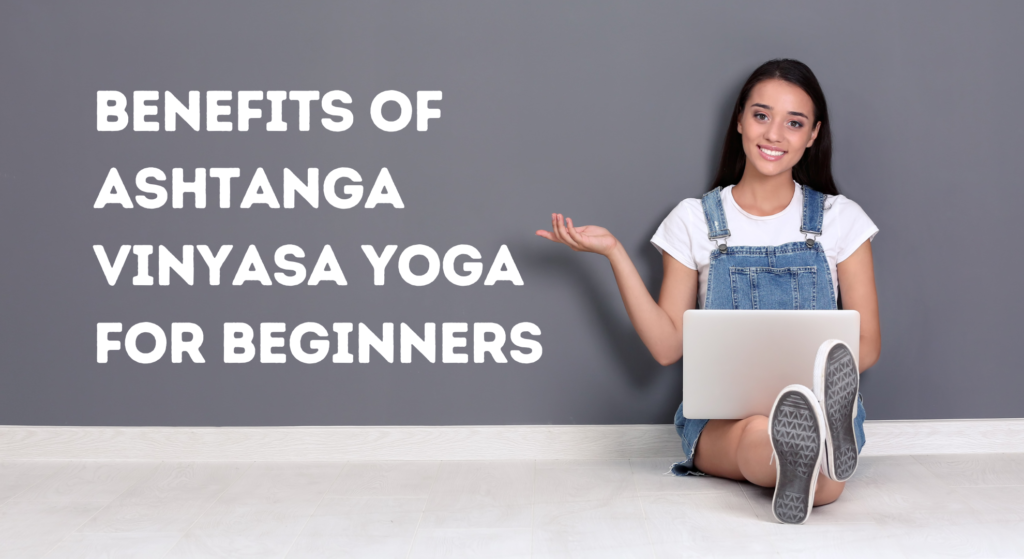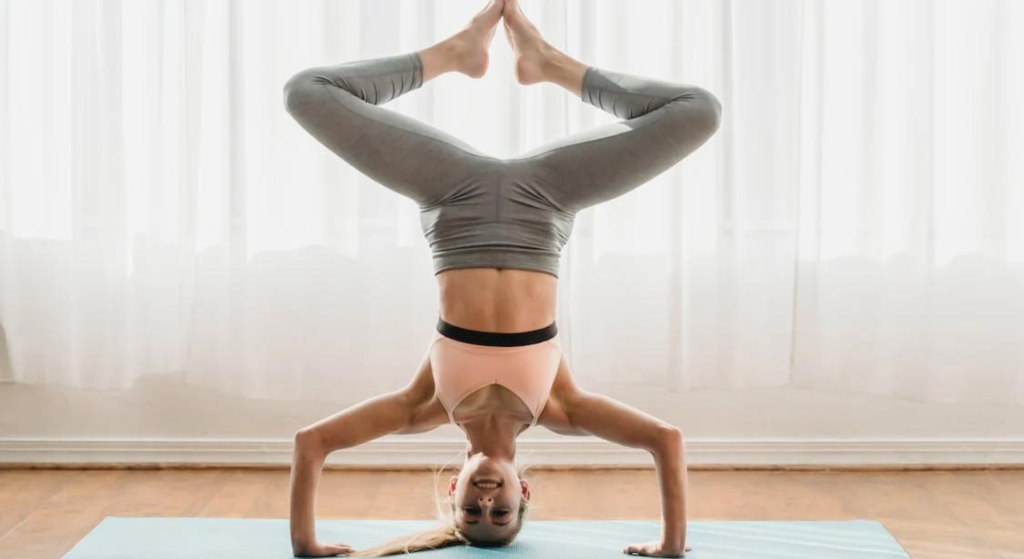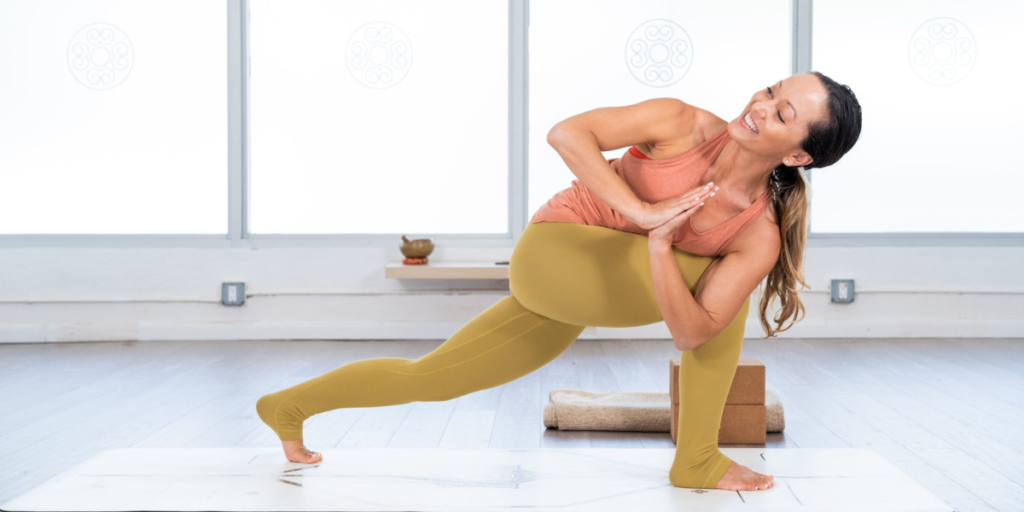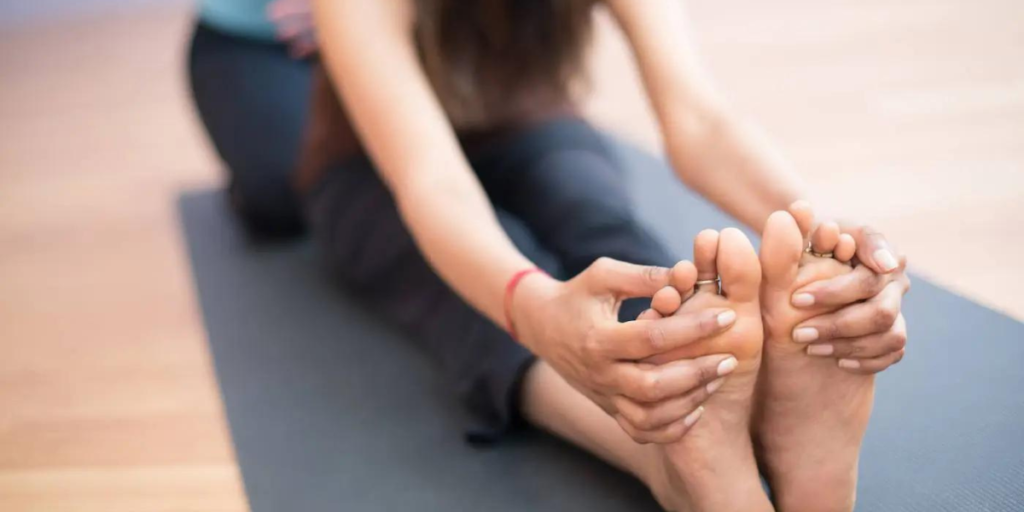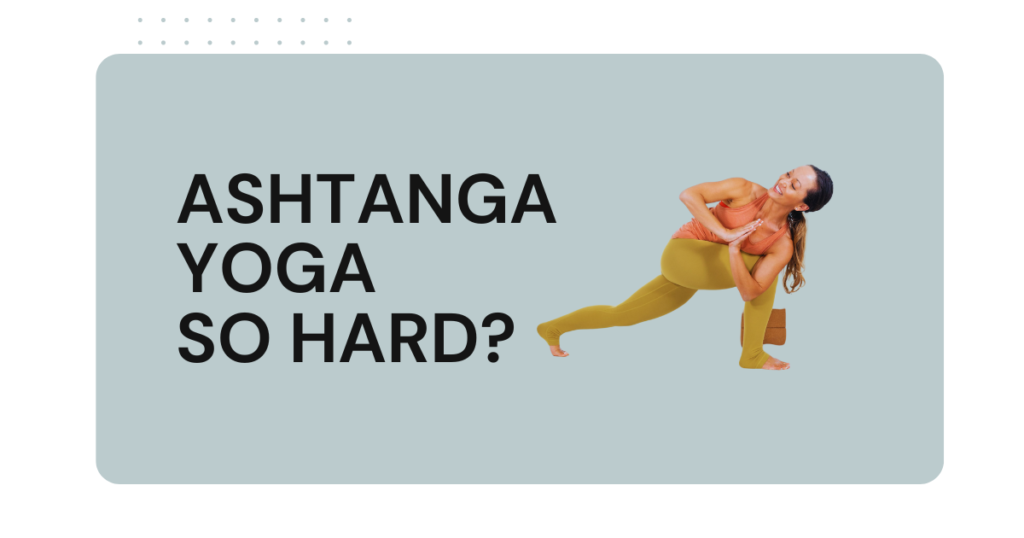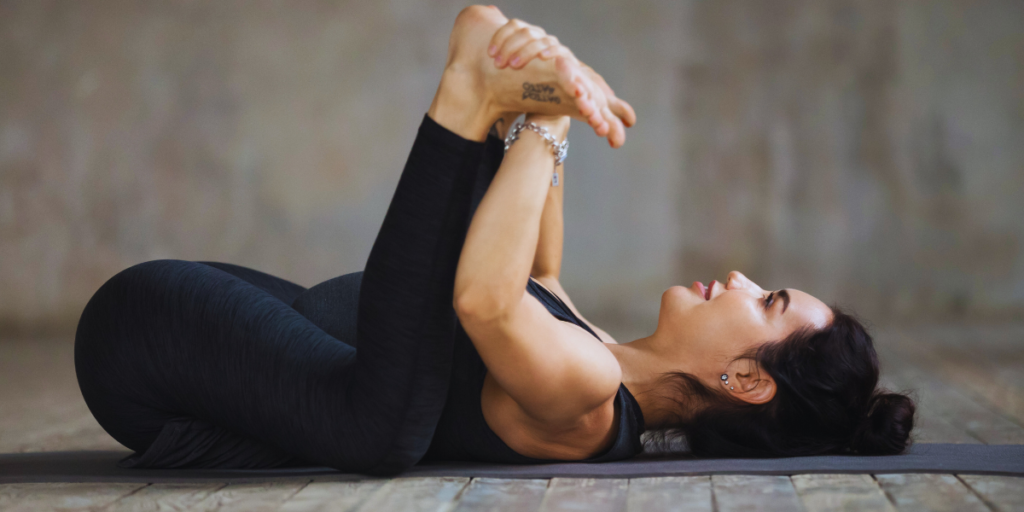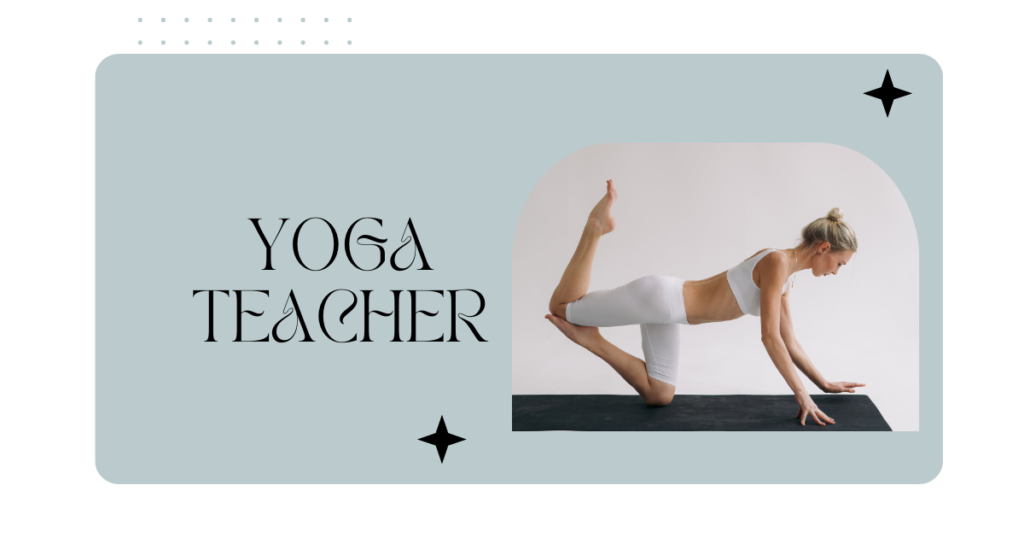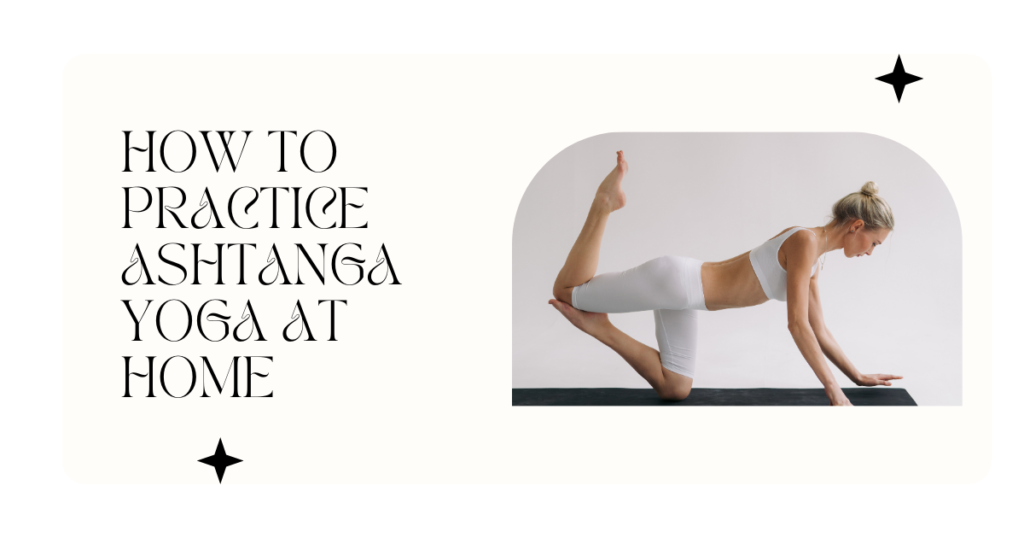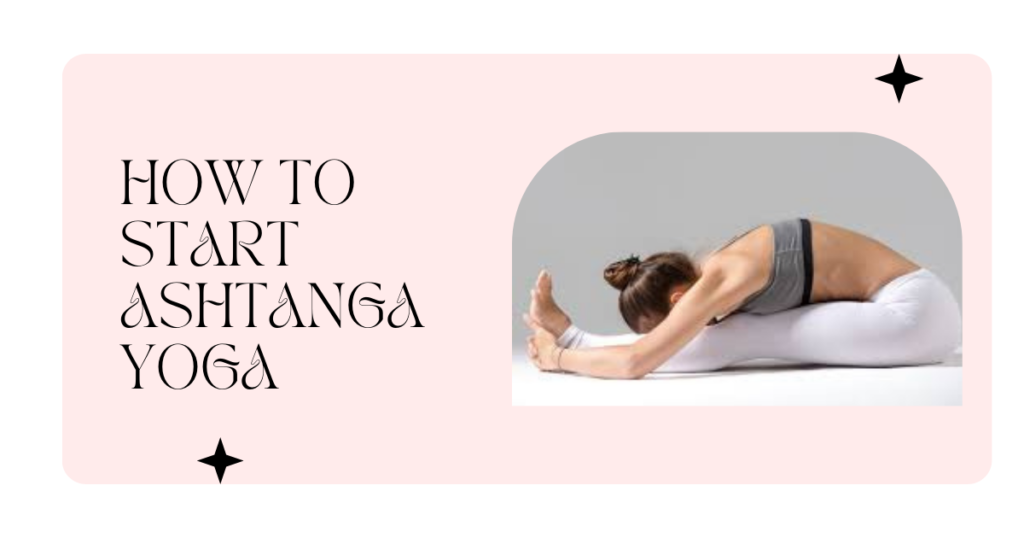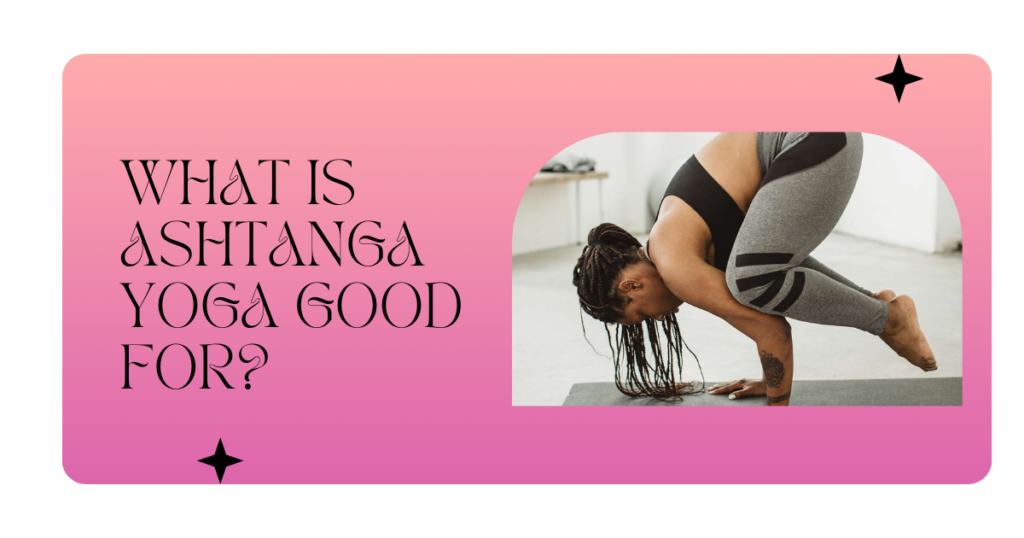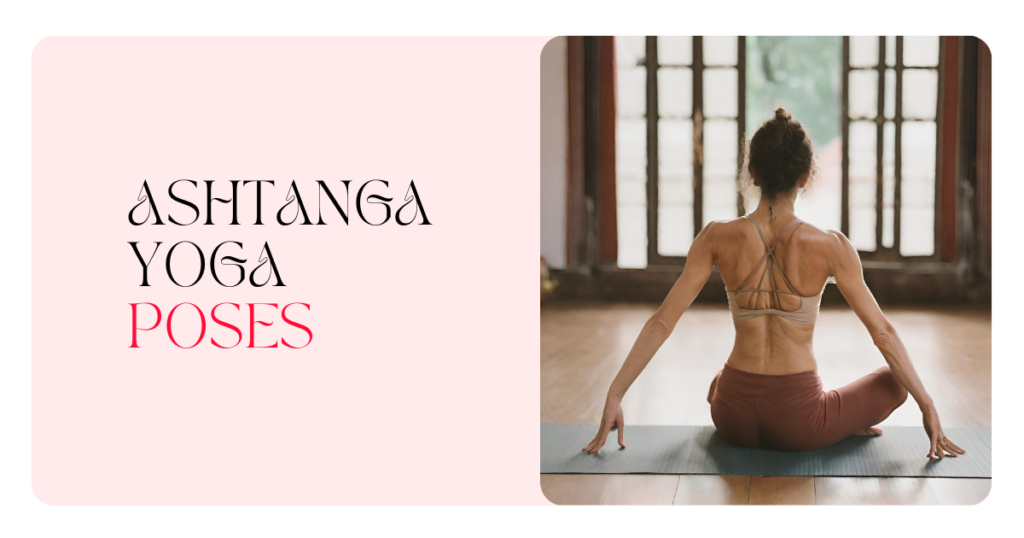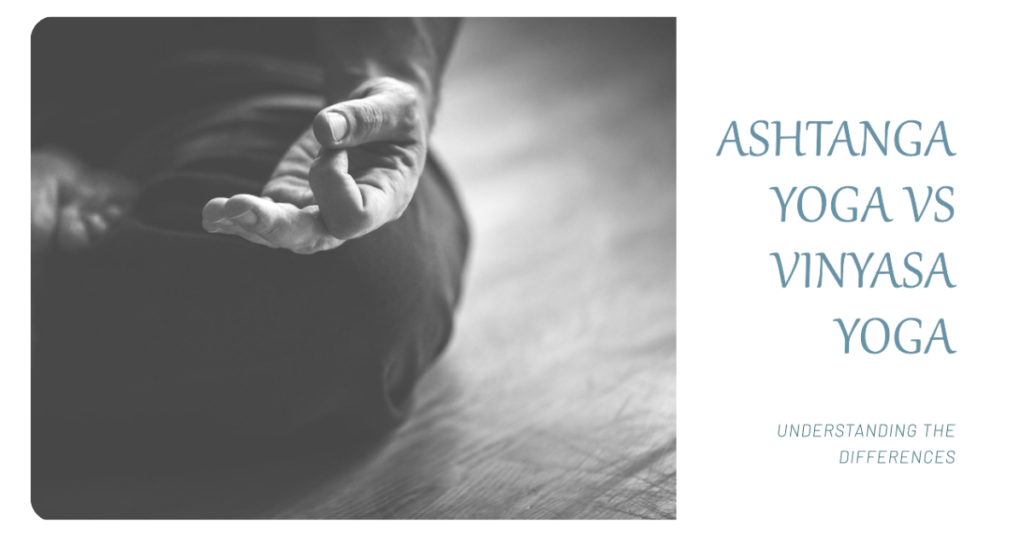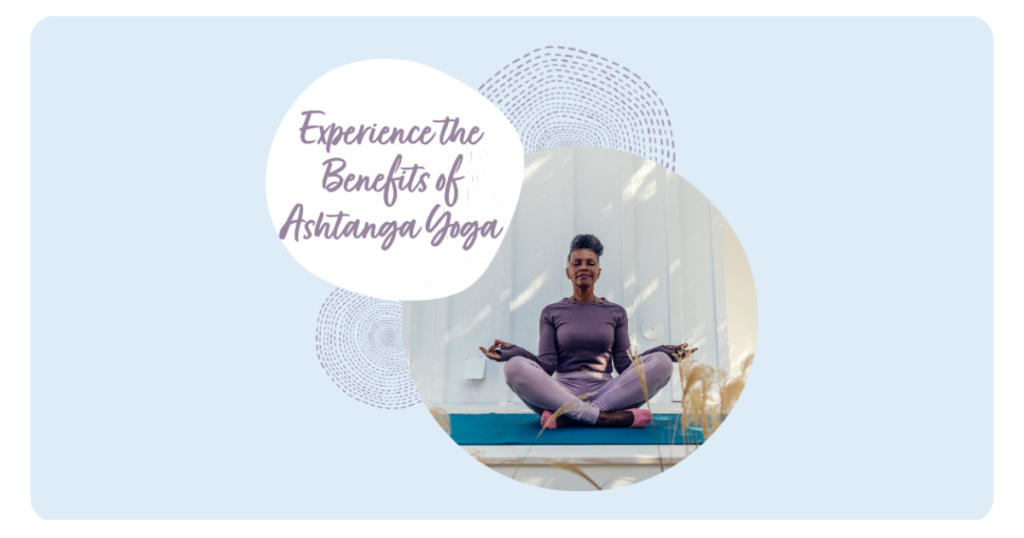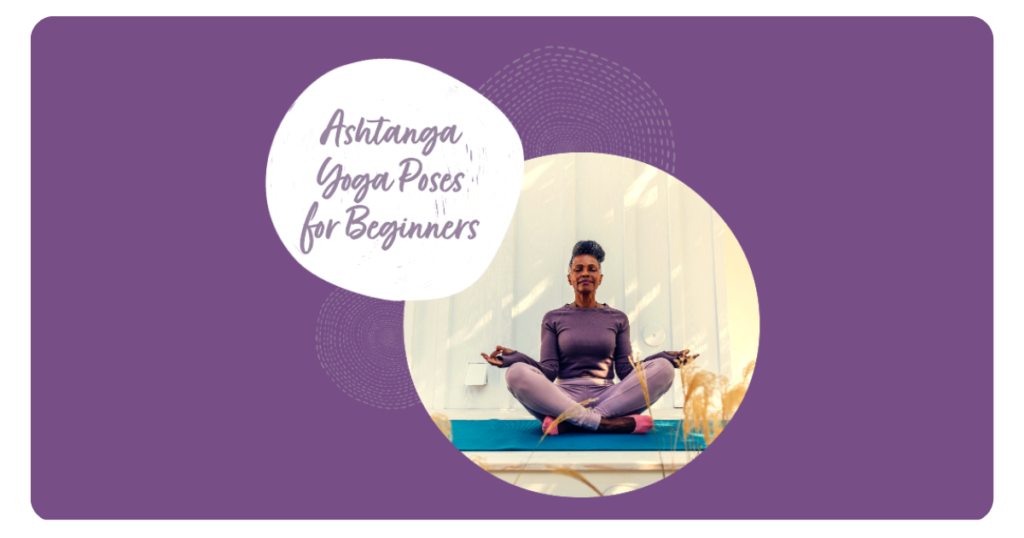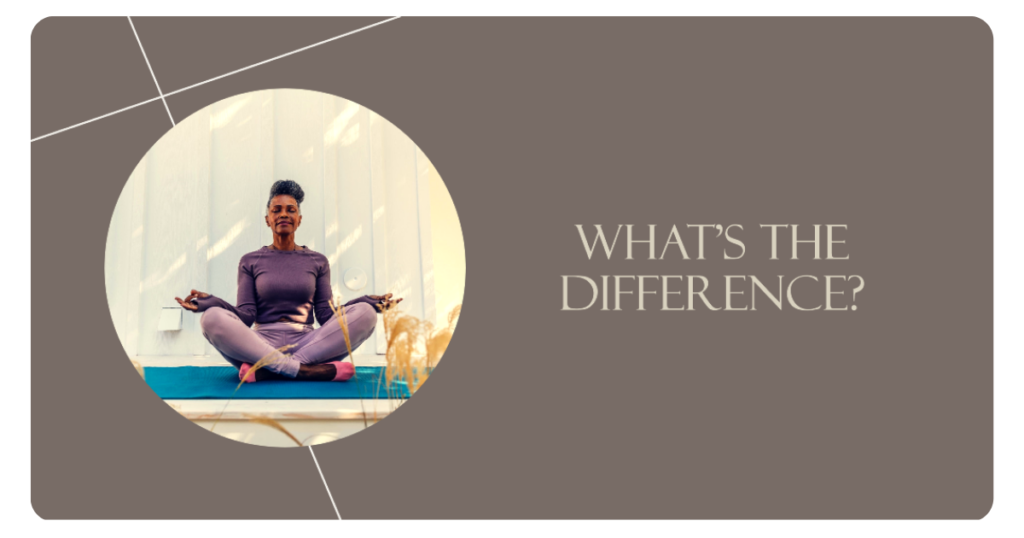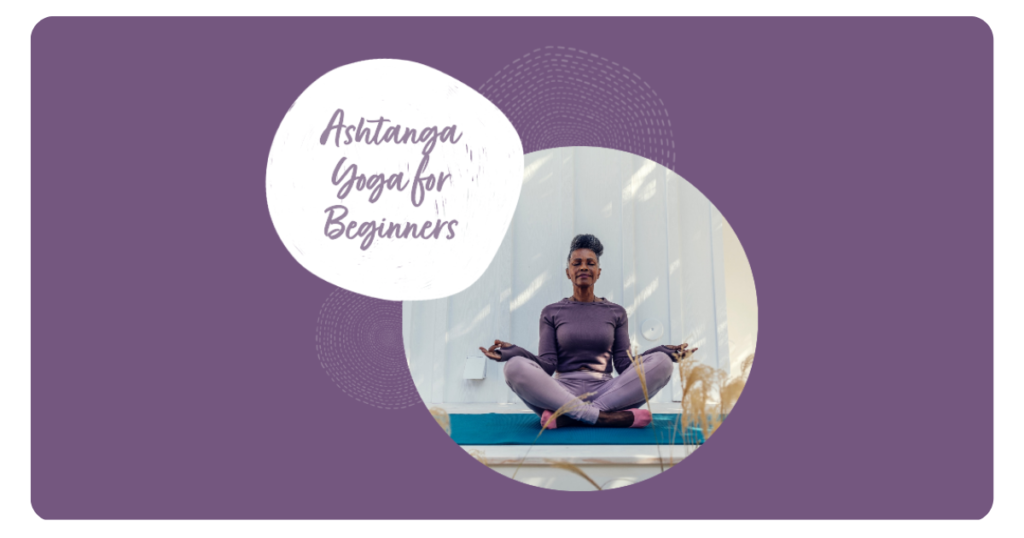
Introduction:
Have you been curious about Ashtanga yoga but felt intimidated to try this rigorous practice? As one of the most popular and demanding yoga styles, ashtanga has gained a reputation for its physically challenging yet transformative sequence of poses. However, ashtanga yoga can be an incredibly rewarding path for total beginners willing to approach it with patience, dedication, and an open mind. “Ashtanga Yoga for Beginners”
This guide will demystify Ashtanga yoga, breaking down its core principles, benefits, and everything you need to know to start your practice safely and confidently. By the end, you’ll have a comprehensive understanding of how to begin your Ashtanga journey and cultivate a lifelong love for this powerful mind-body discipline.
What is Ashtanga Yoga?
Ashtanga yoga is a dynamic and flowing style of yoga that synchronizes breath with a progressive series of postures. Unlike many modern yoga classes that have more versatile sequencing, ashtanga follows a specific order of poses derived from an ancient Sanskrit text called the Yoga Korunta.
At the heart of ashtanga yoga are three key principles:
These principles, combined with ashtanga’s emphasis on discipline, concentration, and continuous movement, create a dynamic practice that builds strength, stamina, and focus over time.
While ashtanga shares similarities with vinyasa flow and power yoga in its vigorous style, it stands apart with its adherence to the linear progression of poses, lack of musical choreography, and the philosophy of following the consistent sequence exactly as established.
The Ashtanga Sequences
There are six established sequences in the ashtanga system, each one building upon the previous:
For beginners, the primary series is the essential starting point and can take 1-2 years of dedicated practice to master before moving on.
Ashtanga Yoga Lineage
The current ashtanga system was revived in the 20th century by Sri K. Pattabhi Jois, who studied the ancient yoga text and re-established it based on the teachings of his guru, Krishnamacharya. Jois later founded the Ashtanga Yoga Research Institute in Mysore, India, which became the epicenter for disseminating this powerful practice worldwide.
Many of the pre-eminent ashtanga teachers today were directly taught by Jois and his grandson Sharath Rangaswamy, maintaining the integrity of this lineage-based yoga tradition. Mysore-style classes follow the authentic method of students individually practicing the set sequence while the instructor provides hands-on adjustments.
Benefits of Ashtanga Yoga for Beginners
Despite its physical intensity, ashtanga yoga offers a wealth of benefits that make it an empowering choice for beginners: “Ashtanga Yoga Benefits: The Ultimate Guide to Physical and Mental Transformation”
Physical Benefits:
Mental/Emotional Benefits:
With its balanced effects on the body, mind, and spirit, ashtanga is a holistic practice that provides tremendous physical vigor while also nurturing your mental and emotional well-being.
| Physical Benefits | Mental/Emotional Benefits |
| Increased strength & flexibility | Reduced stress & anxiety |
| Detoxification & circulation | Increased discipline & willpower |
| Weight loss & calorie burn | Heightened mind-body connection |
| Improved posture & alignment | Improved focus & concentration |
Key Principles
- Tristhana (breath, posture, gazing point)
- Vinyasa (breath-synchronized movement)
- Set sequence of poses followed each practice
Physical Benefits
- Increased strength, flexibility, stamina
- Detoxification and improved circulation
- Supports healthy weight loss
- Better posture and body alignment
Mental/Emotional Benefits
- Reduces stress and anxiety
- Builds discipline and willpower
- Enhances mind-body awareness
- Develops concentration skills
Link to research on ashtanga yoga benefits
Getting Started with Ashtanga Yoga as a Beginner
Taking those first steps into an ashtanga yoga practice can feel intimidating, especially if you’re new to yoga altogether. However, with the right preparation and mindset, beginning ashtanga is an accessible and rewarding journey. Here’s what to keep in mind:
What to Expect in Your First Ashtanga Class
Most ashtanga classes are Mysore-style, where students practice the sequence at their own pace while the teacher provides hands-on adjustments. This format allows everyone from total beginners to advanced practitioners to practice together.
When you arrive, the instructor will likely go over the fundamental techniques like the ujjayi breathing and sun salutations. Don’t be surprised if you spend the first few classes simply mastering these foundational elements before moving into the full sequence.
The teacher will guide you pose-by-pose at your level until you memorize the order. The pace can feel quick compared to other styles, so focus on your breath and don’t worry about keeping up initially.
Breathwork: The Essence of Ashtanga
Proper breathing technique is central to the ashtanga practice. The ujjayi breath creates a subtle vocal constriction that produces an audible ocean-like sound.
Initiating this breath begins by softly constricting the back of your throat on the inhale and exhale. It takes practice but helps you maintain smooth, controlled breathing even during intense poses.
Coordinating this breath with movement is the vinyasa aspect. For example, you may inhale while lifting into Chaturanga and exhale as you push back to Upward-Facing Dog. Learning this breath is crucial for beginners.
Finding a Qualified Ashtanga Instructor
Unlike mainstream yoga classes, ashtanga has maintained a lineage-based system of teaching passed down for generations. Seek out instructors certified in the traditional Mysore method who emphasize proper alignments.
An experienced ashtanga teacher can ensure you build the strength and flexibility needed before progressing, reducing injury risks. They can also guide adjustments suited for your specific body and abilities as a beginner.
While ashtanga videos are helpful supplements, prioritize taking live beginner courses first to master the core techniques accurately.
Essential Props and Equipment
Most studios provide these items, but having your own props can enhance your home practice:
- Yoga mat for traction and cushioning
- Blocks to help you achieve proper pose alignment
- Strap to increase flexibility in stretches
- Towel to create traction when sweating
- Comfortable, breathable clothing
Starting an ashtanga practice requires relatively minimal equipment, making it an accessible style to begin. As your practice deepens, you may invest in additional props like yoga blankets.
By understanding what to expect, mastering the breathing technique, learning from a qualified instructor, and having the right props, you’ll lay the groundwork for a safe, rewarding beginning to your Ashtanga journey.
The Primary Series (Yoga Chikitsa) of Ashtanga
For Ashtanga beginners, the primary series or “Yoga Chikitsa” is the essential starting point. This foundational sequence was designed by the ancient yogis to realign the body, build strength and flexibility, and purify the systems.
While the full primary series contains over 70 poses, as a beginner you’ll gradually work on mastering a portion of these asanas first before progressing further. Here’s a breakdown of some key poses and what to expect:
Sun Salutations (Surya Namaskara A & B)
Every Ashtanga practice begins with a series of sun salutations to build heat and sync the breath with movement. Surya Namaskara A consists of 9 postures flowing in a loop, while the more challenging Surya B adds a few deeper postures.
For beginners, mastering the A series first is crucial for developing strength in the arms, legs, and core. It also helps ingrain the breathing patterns.
Standing Postures
Once warmed up, you’ll move into a sequence of standing poses that challenge balance, hip flexibility, and focus:
- Utkatasana (Chair Pose)
- Ardha Baddha Padmottanasana (Bound Half-Lotus Forward Fold)
- Utthita Trikonasana (Extended Triangle Pose)
- Parivritta Trikonasana (Revolved Triangle Pose)
These fundamental standing asanas build stability, open the hips and hamstrings, and prepare the body for more advanced postures. As a beginner, focus on proper alignment using the wall or blocks for support.
Seated Poses
The next section includes a variety of forward folds, twists, and hip openers performed from a seated position:
- Padmasana (Lotus Pose)
- Janu Sirsasana (Head-to-Knee Forward Bend)
- Marichyasana A-D (Pose Dedicated to the Sage Marichi)
These poses promote flexibility, particularly in the hips, hamstrings and spine. Use props like blocks and straps to work towards the full expressions gradually.
Backbends
Backbends counterpose the seated forward folds and open up the entire front body:
- Urdhva Mukha Svanasana (Upward-Facing Dog Pose)
- Bhujangasana (Cobra Pose)
- Urdhva Dhanurasana (Upward-Facing Bow)
As a beginner, take these slowly and avoid cranking too deeply into the backbends, which could strain the back. Focus on distributing the arc evenly while keeping the core engaged.
Finishing Postures
The practice ends with a few cooling postures:
- Setu Bandhasana (Bridge Pose)
- Salamba Sirsasana (Headstand)
- Navasana (Boat Pose)
Don’t feel obligated to attempt tougher poses like headstand initially. Modify as needed or practice the preparatory exercises instead.
The full primary series cultivates balance between strength and flexibility. Progress patiently, perfecting each posture with the breath before advancing. An experienced ashtanga teacher’s guidance is essential for beginners mastering this set sequence.
Safety Tips for Ashtanga Beginners
Ashtanga yoga, with its emphasis on physical intensity and a challenging sequence of poses, does come with some risks for injury if not practiced mindfully. As a beginner, it’s crucial to prioritize safety and listen to your body’s limits. Here are some key tips:
Don’t Rush or Force Poses One of the biggest pitfalls beginners face is pushing too hard into advanced poses before their body is ready. Resist the urge to quickly progress just to keep up with more experienced students. Follow the sequence methodically and use props when needed to work towards postures in proper alignment. Forcing yourself too deeply into binds or pretzel-like shapes can lead to strains.
Learn Proper Alignment First Many ashtanga poses require precise alignment of the joints, spine, and muscles to avoid compromising form. Make sure you understand the correct entry and exit points for each asana from a certified instructor. Never sacrifice alignment for pushing deeper into a pose. Proper form helps prevent common injuries like wrist, low back, knee or hamstring issues.
Rest When Needed Ashtanga’s continuous flow can be intense, especially for beginners. If you’re feeling light-headed, nauseated or overly fatigued, take a rest in child’s pose. Don’t force yourself to keep moving at the risk of potential dizziness or loss of balance. It’s better to pause, reset and re-join with awareness.
Understand Contraindications Certain poses in the ashtanga series are contraindicated or ill-advised for students with specific conditions or injuries. For example, headstands and deep forward folds may not be suitable for those with injuries, uncontrolled high blood pressure or glaucoma. New and expectant mothers also need to avoid particular asanas. Consult your doctor if needed.
No Ego on the Mat Ashtanga students are often exposed to very advanced practitioners performing challenging arm balances or pretzel-like binds. As impressive as these poses are, don’t let your ego push you prematurely into asanas your body isn’t prepared for. Swallow your pride and accept modifications – an injury could set you back tremendously.
Don’t Neglect the Fundamentals
The tendency for eager beginners is to want to jump ahead before mastering the basics like breathwork, bandhas (energetic locks), drishti (gaze), and vinyasas. However, these fundamentals lay the critical foundation for the entire Ashtanga practice. Never underestimate their importance for safe progression.
By approaching the Ashtanga system with patience, awareness, and precaution, beginners can avoid many of the common injuries. Move at your own pace, respect your limits, and always prioritize proper form over depth in a pose.
Creating an Ashtanga Yoga Routine at Home
While learning Ashtanga yoga in a studio setting with a qualified teacher is ideal, especially for total beginners, it’s also possible to develop a home practice once you understand the foundations. Having an Ashtanga routine you can do at home allows you to deepen and maintain your practice between classes.
Here are some tips for starting an ashtanga yoga routine at home:
Setting Up a Dedicated Practice Space
Find a quiet, distraction-free area in your home and create a calming sacred space for your practice. Ensure you have enough room to move around without obstacles. Add elements like an altar with meaningful objects, candles, or statues to set the vibe. Keep water and any needed props like blocks nearby as well.
Use Videos or Online Classes
As a beginner, rely on instructional videos from experienced ashtanga teachers to guide you through the primary series. Popular resources include the classes on OMSTARS by Kino MacGregor and David Swenson’s video series. Having an instructor walk you through the poses, breathing techniques, and transitions is invaluable.
There are also many online ashtanga courses or subscriptions you could consider once you have the basics down. But avoid randomly piecing together poses from different video sources in the beginning.
Learn the Fundamental Breathwork and Vinyasas
Before attempting to follow a full primary series video, spend time mastering the Ujjayi breath and the integral vinyasa transitions like Chaturanga to Upward Dog to Downward Dog. These breath-linked movements form the backbone of the ashtanga system. Nail these foundational practices first.
Start with a Simple Sequence
While the complete primary series can take 90+ minutes, start much smaller as a beginner at home. Even 15-20 minutes with a few sun salutations, some standing poses, and a few seated asanas can provide an effective, manageable routine to build upon. Consistency with a moderate practice is better than sporadic advanced sessions.
Consider Mysore-Style Classes
If you have access to authorized ashtanga teachers offering the traditional Mysore-style classes, attending these periodically can be incredibly beneficial. They’ll guide you personally through the poses at your level and provide hands-on adjustments. These classes help ensure your home practice is on the right track.
Be Patient and Keep Showing Up
Progress in ashtanga requires an immense amount of patience, determination and self-compassion. Poses and transitions that seem impossible will gradually become more accessible. Celebrate small wins, and don’t get discouraged. The key is remaining consistent with your home practice, no matter how simple it may seem. The benefits unveil themselves over time.
With commitment, proper guidance, and realistic expectations, anyone can cultivate a sustainable home ashtanga yoga practice as a beginner. Let the routine nurture your mind, body and spirit’s growth.
Ashtanga Yoga Frequently Asked Questions
Is ashtanga yoga hard for total beginners? While ashtanga is considered one of the more demanding yoga styles, it’s absolutely possible for complete beginners to start ashtanga when approached mindfully. The key is starting slowly, not rushing, and having an experienced teacher provide modifications. The Ujjayi breath and sun salutations alone can feel challenging initially but get easier over time. Beginners will gradually build up strength, flexibility and stamina.
How often should beginners practice ashtanga? Most ashtanga teachers recommend beginners aim for a realistic 2-4 practice sessions per week when starting out. Going too intensely from zero practice to doing full primary series daily is a fast-track to burnout or injury. Build up the frequency gradually, and take rest days as needed, especially when feeling overly sore or fatigued. Consistency is more important than quantity.
What are the most challenging aspects for new students? Some of the biggest obstacles beginners face in ashtanga include mastering the Ujjayi breath, developing the strength and flexibility for poses like Chaturanga Dandasana (plank) and hip openers, memorizing the set sequence, and cultivating the physical and mental stamina to flow continuously without rest. But these hurdles are overcome progressively with regular, patient practice.
How is ashtanga different from vinyasa or power yoga? While ashtanga has a vigorous vinyasa-based flow like power yoga classes, it’s distinguishing factors are the adherence to a specific sequence of poses, the emphasis on ujjayi breath and drishti (gaze points), the lack of choreography to music, and the lineage-based teaching methodology. Vinyasa and power yoga allow more flexibility in sequencing.
Can ashtanga help with weight loss? Yes, ashtanga yoga can be a very effective practice for healthy weight loss when combined with a balanced diet. The intense flowing movement, emphasis on core engagement, and cardiovascular nature of the practice rev up the metabolism and burn a high number of calories in a typical 90 minute session. Ashtanga also builds lean muscle mass, which boosts your metabolism long-term.
Conclusion:
Starting an ashtanga yoga practice requires an open mindset, dedication, and patience – but beginners absolutely can unlock the transformative physical and mental benefits of this ancient system at any age or fitness level.
By understanding Ashtanga’s principles, mastering the breath and vinyasa foundations, committing to progressively working through the primary series, and finding a qualified teacher, you’ll embark on a journey of empowering strength, grace and self-awareness.
Trust the process, stay consistent, and prepare to unveil the lighter, more focused version of yourself waiting within. The long-lasting rewards of ashtanga yoga are well worth the initial challenges. Embrace the path with an open heart and watch how it changes your body, spirit, and life.
